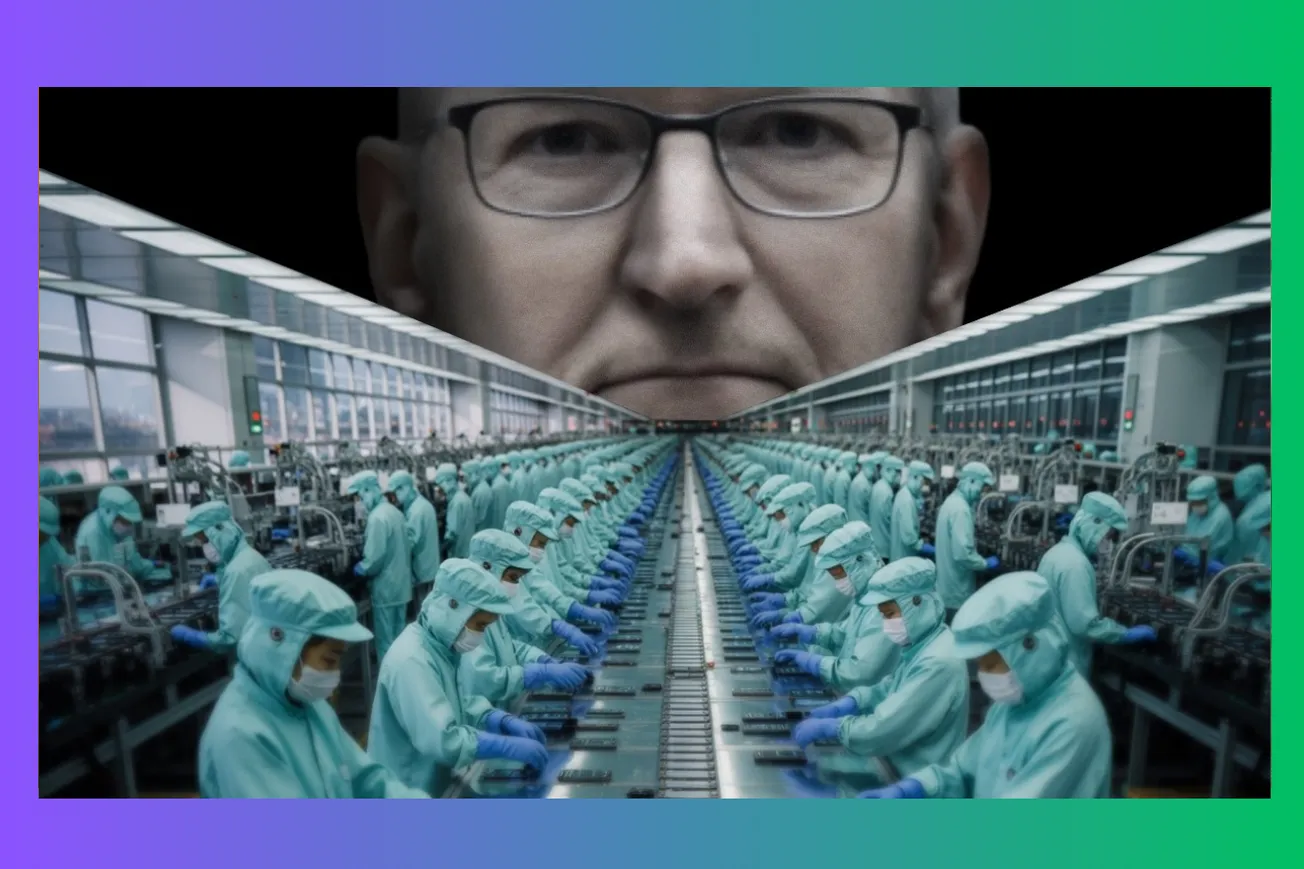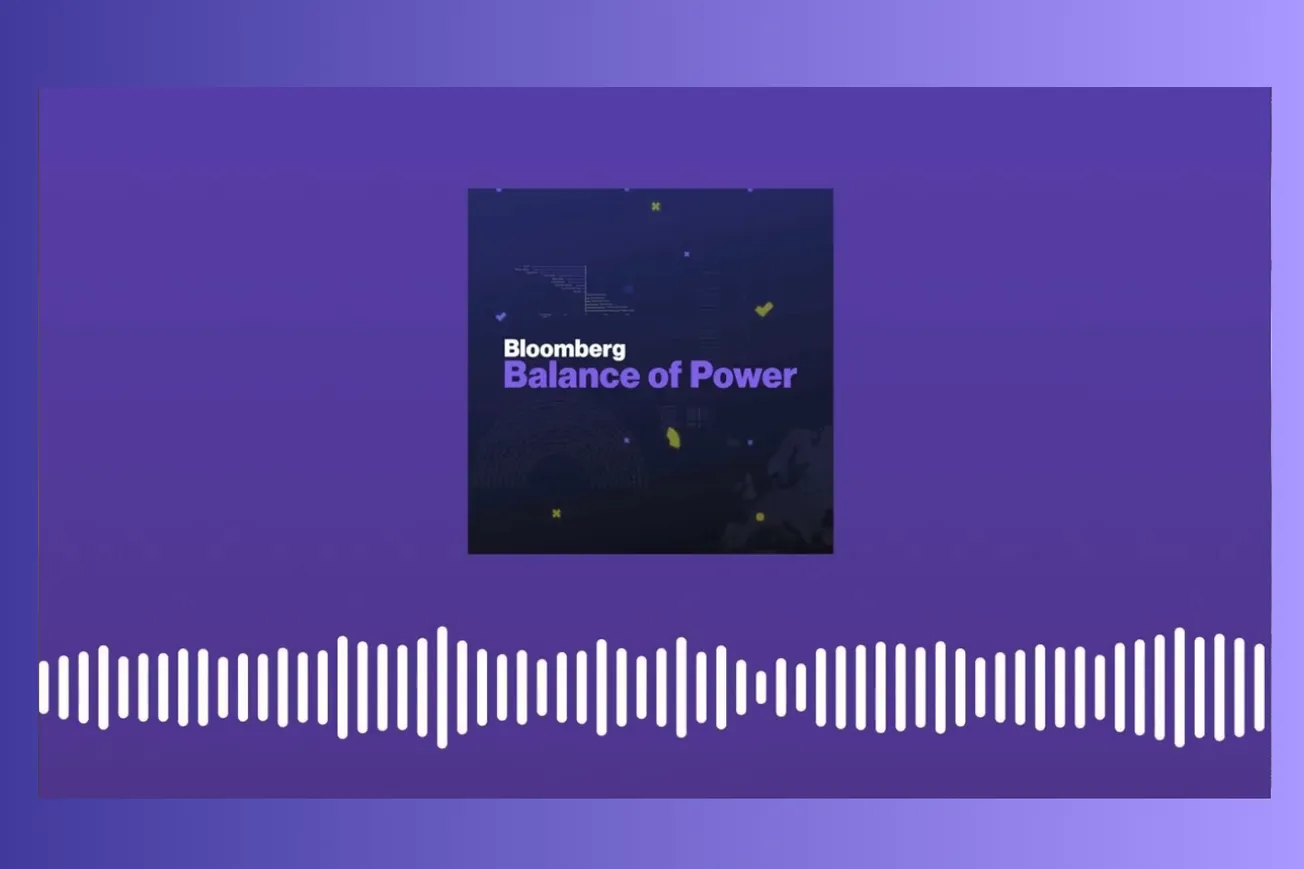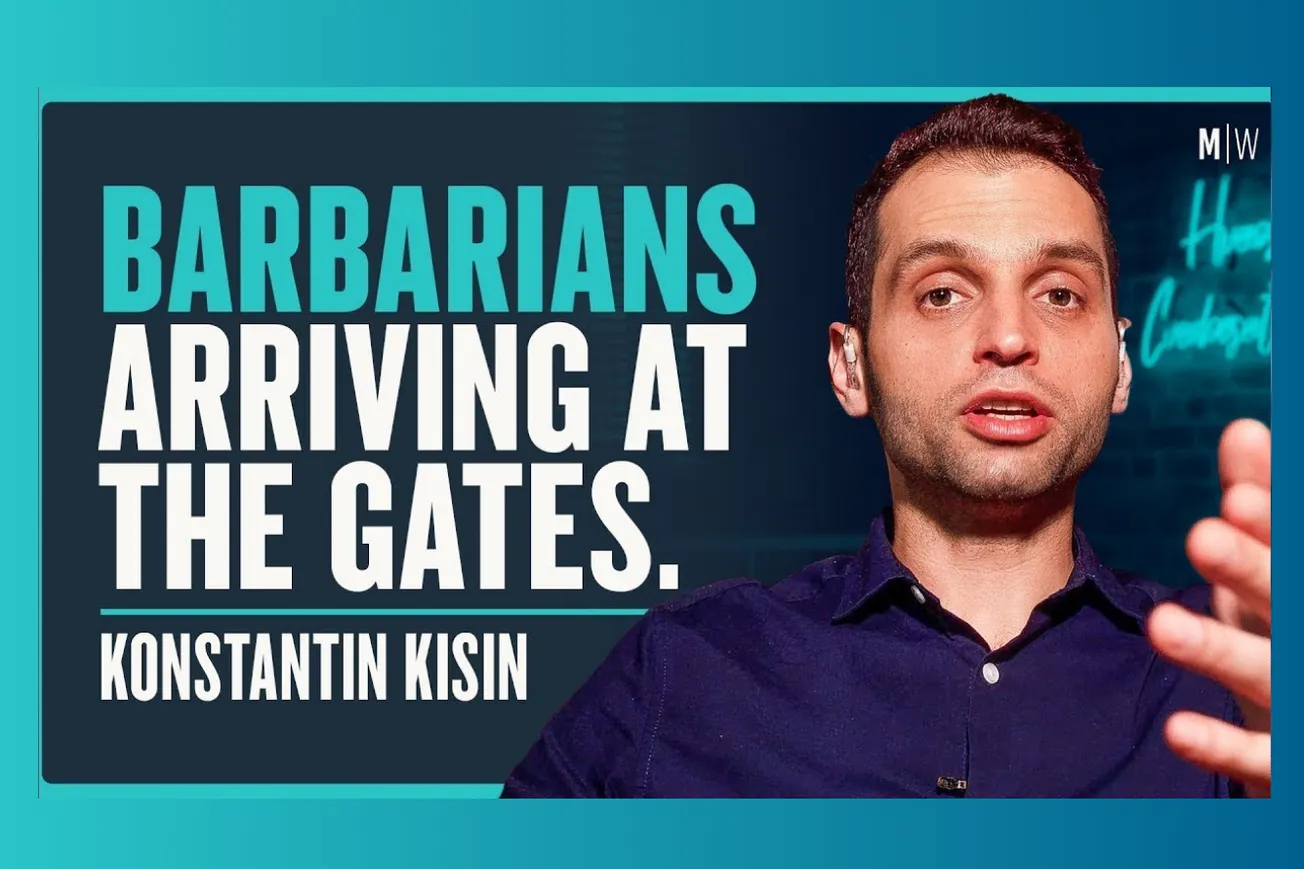Table of Contents
Patrick McGee reveals how Apple's obsessive pursuit of manufacturing perfection accidentally catalyzed China's transformation into a global industrial powerhouse - and why escaping that relationship may now be impossible.
Key Takeaways
- Apple's obsession with building everything themselves ended when the dot-com crash made outsourcing a survival necessity
- China wasn't the obvious choice initially - Apple tested manufacturing across multiple continents before suppliers naturally gravitated to China
- Johnny Ive's "impossible" designs forced Apple to teach Chinese manufacturers entirely new production techniques
- The translucent iMac was literally considered "unmanufacturable" by Apple's own engineers until they developed new methods
- Apple engineers worked such brutal hours that the company created a "Divorce Avoidance Program" to save marriages
- Terry Guo of Foxconn understood Chinese politics better than anyone, leveraging factory growth to secure massive government benefits
- Apple's $55 billion in Chinese investments represents training costs and machinery, not just purchasing - making them more like GM than Walmart
- Chinese smartphone makers went from mimicry to innovation faster than Apple expected, catching up within months on new designs
- Apple is essentially trapped in China with no viable Plan B, while China prepares for self-sufficiency through Made in China 2025
- The partnership created a $3 trillion company but may have trained America's ultimate competitor in high-tech manufacturing
From "Real Men Own Fabs" to Survival Outsourcing
Apple's journey to China began with a crisis that almost killed the company. In the 1990s, the prevailing Silicon Valley wisdom was that serious hardware companies built everything themselves. Steve Jobs and Steve Wozniak had met at the Homebrew Computer Club, taking apart computers and rebuilding them better. Apple wasn't unusual in assembling computers in-house - that's simply what you had to do when a globalized electronics supply chain didn't exist.
The IBM PC in 1981 changed everything, though Jobs initially missed the significance. When he disassembled an IBM PC, he famously said "there's nothing special here" - and he wasn't wrong about the components. What he missed was that IBM had created an entirely new competitive battleground focused on scale manufacturing rather than elegant design or user experience.
IBM achieved this through partnerships with third-party assembly giants like SCI (Solectron Corporation), which Patrick McGee calls "the Foxconn of its day." Founded in Alabama with military precision from satellite and rocket work, SCI brought aerospace-level manufacturing discipline to personal computers. This model spread to HP, Dell, and other PC makers, giving birth to electronics globalization.
Meanwhile, Apple maintained its DNA of vertical integration. Even when Jobs left to found NeXT, he boasted that his favorite thing about the NeXT computer was "that it wasn't built in Osaka" - with Japan playing the role that China plays today. When Jobs returned to Apple in 1997, he initially resisted outsourcing, even handing out t-shirts reading "Mac Factories" to employees as late as 2000.
- Apple's early culture emphasized complete vertical integration and in-house manufacturing
- IBM's PC strategy created the template for modern electronics manufacturing outsourcing
- Jobs remained philosophically opposed to outsourcing even after returning to Apple
- The dot-com crash forced strategic reconsideration of manufacturing approaches
The turning point came with Apple's near-death experience. In September 2000, Apple stock lost 50% in a single day. The company was so weakened that Gateway considered acquiring them - Gateway, of all companies, thinking they could buy Apple. This crisis forced the company to abandon manufacturing nationalism and embrace global outsourcing for survival.
The Global Dating Game: Finding the Right Manufacturing Partner
Apple's move to China wasn't immediate or obvious. Instead, the company pursued what McGee calls a "tri-continental strategy" - building locally for continental markets. Apple assembled computers in California and Colorado for North America, Ireland for Europe, and Singapore for Asia. When they began working with contractors in the late 1990s, they replicated this geographic distribution.
LG manufactured the translucent iMac (in that iconic Bondi blue color) in Korea, then expanded to Wales and Mexico to meet demand. When Foxconn entered as a second supplier, they initially worked from China for Asia, the Czech Republic for Europe, and Fullerton, California for America. It was only through direct cost and efficiency comparisons across these three regions that China consistently won.
The decision wasn't architected by any single executive - it emerged from hundreds of suppliers independently choosing China. As McGee puts it, "nobody architected a move to China, but in one opportunity after another, Apple operations were lured into the country." Tim Cook often gets credit as the architect of the China strategy, but he was more like "an admiral navigating the macroeconomic seas of supply chains" rather than the strategist.
China offered something no other location could match: industrial clusters forming rapidly, factories built at amazing speed (though initially poor quality), and policies tailor-made for companies like Apple. McGee shares an anecdote about an Apple engineer in early 2000s Shenzhen literally counting stairs between floors because it was obvious they weren't uniform - everything was built with stunning speed but questionable quality.
- Apple initially distributed manufacturing across three continents to serve regional markets
- Multiple suppliers independently chose China after comparing efficiency across regions
- China's competitive advantage wasn't just cost but speed and policy flexibility
- Quality was initially poor but scale and speed were unmatched globally
The scale considerations became crucial as Apple's products shrank. Moore's Law was decreasing product size just as volumes exploded. In 2003, Apple made more iPods in one year than iMacs in the previous five years combined. When you're shipping millions of iPod-sized devices rather than desktop computers, the logistics equation changes completely - China's geographic distance becomes irrelevant when the cost per item drops dramatically.
The Translucent iMac: "Unmanufacturable" Becomes Iconic
The story of the translucent iMac perfectly captures how Apple's obsessive design standards forced manufacturing innovation. When Johnny Ive presented his design for what would become Apple's salvation product, Apple's own engineers declared it "unmanufacturable." Not difficult to manufacture at scale - literally impossible to build even one prototype in the lab.
This was the product that emerged from a legendary meeting between Steve Jobs and Johnny Ive in summer 1997. Jobs expected to fire Ive; Ive arrived with his resignation letter in his pocket. Instead, they discovered a shared vision for redefining computer aesthetics. Jobs was looking at Apple's existing eMATE 300 - a translucent Newton-laptop hybrid - and envisioning how that aesthetic could transform the entire industry.
The original design featured horizontal translucent pinstripes that were perpendicular to the plastic injection molding lines - a physical impossibility. For months, specialists experimented with new techniques while engineers dropped off the project because the task seemed hopeless. Jobs, uncertain whether Apple would survive long enough to complete the product, threatened to sell his last remaining Apple share if the team couldn't solve the manufacturing puzzle.
External consultants from Acorn (who had designed the NeXT computer) confirmed what Apple's team already knew: the design couldn't be built as specified. This forced Johnny Ive to confront a crucial learning moment - he needed to understand manufacturing constraints to create truly buildable products, not just beautiful concepts.
- The translucent iMac was literally considered impossible to manufacture by Apple's engineering team
- External design consultants confirmed the manufacturing impossibility of the original design
- Johnny Ive had to learn manufacturing constraints to evolve beyond pure conceptual design
- The project's difficulty served as an accidental filter for the most committed team members
The final product required significant compromises. The horizontal pinstripes became vertical, and the translucency was made foggier to hide ugly internal circuit boards. But the essence of the revolutionary design survived, creating America's bestselling computer and literally saving Apple from bankruptcy. The iMac proved that manufacturing constraints could be overcome through engineering persistence - a lesson that would prove crucial for Apple's future relationship with Chinese manufacturers.
The Divorce Avoidance Program: Human Cost of Obsessive Excellence
Behind Apple's manufacturing revolution was a human story of extreme dedication that came at enormous personal cost. The intensity of Apple's engineering culture during the late 1990s comeback was so brutal that the company had to create formal policies to prevent employee divorces. Engineers were working such long hours and traveling so frequently that marriages were collapsing at an alarming rate.
The "Divorce Avoidance Program" (DAP) started as an acknowledgment that engineers sometimes couldn't work because their marriages were literally on the line. Initially, managers would simply excuse Jordan and Kyle from the production line when their spouses had reached breaking points. But when those same engineers were desperately needed for critical factory visits, Apple developed more creative solutions.
If an engineer needed to fly to Korea on a random Sunday just two days after returning from a previous trip, and their spouse was going to be upset, Apple would simply give her $10,000 to assuage the situation. Engineers called these payments "Danny Bucks" or "Dan Bucks" after VP of Product Design Dan Riccio, who fought for these policies. The goal was preventing engineer attrition while maintaining the brutal pace necessary for product development.
The human cost extended beyond divorces. When McGee mentioned the DAP to one former engineer, the response was sobering: "Never mind the divorces, you need to look at the deaths." Some engineers literally died from the stress and overwork, though McGee notes that definitively linking deaths to overwork is journalistically impossible decades later.
- Apple's engineering culture was so intense it required formal divorce prevention policies
- The company paid spouses directly to maintain engineer availability for critical projects
- Some engineers died from stress-related causes, though causation is difficult to prove decades later
- Steve Jobs himself believed his cancer resulted from weakened immunity due to overwork
Interestingly, Steve Jobs believed his own cancer diagnosis resulted from this culture. He attributed his illness to working so hard as CEO of both Pixar and Apple in 1997 that his immune system weakened, allowing cancer to develop. Whether medically accurate or not, Jobs understood the human cost of Apple's obsessive culture.
The parallel to Chinese manufacturing workers is obvious but incomplete. While Foxconn workers faced their own extreme conditions (including the tragic suicides that led to safety nets), Apple engineers were highly compensated and had exit opportunities. What kept them wasn't desperation but a combination of mission, team loyalty, and excitement about revolutionary products - similar dynamics to early Huawei's culture of extreme dedication.
Terry Guo's Political Genius: Understanding Chinese Federalism
While Apple engineers were mastering manufacturing techniques, Terry Guo of Foxconn was mastering something equally important: Chinese politics. Guo's understanding of China's political system gave him advantages that other Taiwanese manufacturers couldn't match, ultimately making Foxconn Apple's most crucial partner.
The key insight was that Chinese communism differs fundamentally from Soviet-style top-down control. McGee describes it as "federalism on steroids" - provincial and local officials are heavily incentivized for factory growth in their districts. Cadres compete to attract investment by offering tax exemptions, bonded zones, tailored policies, and access to migrant labor from rural areas.
Guo understood this competitive dynamic better than anyone. By positioning Foxconn as a pure OEM (Original Equipment Manufacturer) focused solely on manufacturing rather than ODM (Original Design Manufacturer) work that included design services, he could offer something other Taiwanese companies couldn't: massive labor intensity and vertical integration.
Other Taiwanese manufacturers like Inventec and Quanta pursued ODM strategies, offering design services alongside manufacturing to capture higher margins. This worked well initially - they could literally show catalogs of computer designs for Western companies to choose from. But it created competitive conflicts when Taiwanese companies began branding their own products, sometimes prioritizing their own brands over client orders during supply shortages.
Foxconn's pure manufacturing focus allowed massive scale investments in dormitories, entertainment venues, and migrant worker communities. This made local Shenzhen officials look extremely successful, earning Guo political capital that translated into free machinery, free tools, and access to more migrant workers. His labor-intensive, vertically integrated approach perfectly aligned with local officials' incentive structures.
- Chinese political system rewards local officials for factory growth, creating competitive incentives
- Terry Guo understood these dynamics better than other Taiwanese manufacturers
- Foxconn's pure manufacturing focus enabled massive scale investments in worker communities
- Political connections provided access to free machinery and expanded labor pools
Apple didn't understand Chinese politics until 2013, but Foxconn was their biggest partner and understood it extremely well. Tragically for Foxconn, their margins actually fell as they grew closer to Apple, but the political connections they built were instrumental to Apple's rise. Guo's genius was recognizing that serving local officials' interests was as important as serving Apple's manufacturing needs.
The $55 Billion Investment: Training China's Industrial Upgrade
By 2013, Apple faced a crisis that forced them to truly understand their relationship with China. With Xi Jinping's rise to power, Apple worried their products might be blacklisted or that they'd be forced into joint ventures - both anathema to Apple's control-obsessed culture. This led to the formation of what they called "the gang of eight" - the first senior Apple executives to live and work permanently in China.
This team conducted Apple's own supply chain study and discovered something remarkable: Apple was investing $55 billion into Chinese factories. But this wasn't just purchasing components like Walmart buying kitchen goods - it was registered capital investment more similar to GM or Volkswagen setting up production lines.
The key distinction lies in China's concept of "registered capital." When companies train workers to run production lines, those training costs count as fixed assets for 18-24 months, just like purchasing machinery. Apple realized their extensive training programs - flying engineers to China to teach manufacturing techniques - should count as investment, not just operational expenses.
But Apple went further than traditional manufacturers. Unlike automakers who set up a production line and run it for seven years, Apple constantly redesigns every product in their portfolio. This means continuous retraining and new machinery installation, allowing them to count far more training costs and wages as registered capital investment.
Someone could debate whether these training costs should count as investment, but as McGee notes, "it's not an argument with me. It's an argument with Apple and it's an argument with Beijing, which accepted the argument." The Chinese government agreed that Apple's hand-in-glove collaboration with hundreds of factories represented genuine investment in China's industrial capacity.
- Apple's $55 billion represents training costs and machinery, not just component purchases
- Training workers counts as fixed asset investment under Chinese registered capital rules
- Apple's constant product redesigns require continuous retraining, multiplying investment calculations
- Beijing accepted Apple's argument that extensive training programs constituted genuine industrial investment
This investment model explains why Apple operates without formal joint ventures despite having enormous influence across hundreds of Chinese factories. They effectively told the Chinese government: "You have no idea what influence we are having on hundreds of factories across the country." The training and technology transfer implicit in this relationship became central to China's industrial upgrading strategy.
The Five-Alarm Fire: When China Caught Up
The most dramatic evidence of China's successful learning from Apple came in what McGee calls "the five-alarm fire" - Apple's panic when Chinese competitors caught up faster than anyone expected. This story emerges from over 1,000 pages of court documents, including depositions from Tim Cook and internal emails, that McGee discovered but no other journalist has analyzed.
The crisis centered on the iPhone XR (pronounced "ten R"), designed specifically for the Chinese market. Apple knew it was struggling - internal communications show executives calling the situation "a disaster" and saying "we need all hands on deck now" weeks before telling investors everything was fine. A VP described the situation using firefighter jargon: a "five-alarm fire" requiring at least 100 people on scene.
The problem was speed of Chinese competitor response. The iPhone X (ten) introduced the "infinity pool" design with Face ID, eliminating the home button. It shipped in November 2017, representing Apple's most significant design evolution in years. Apple expected to "bask in the glow of this amazing device" for an extended period.
Instead, by April 2018 - just four to five months later - all four major Chinese brands (Huawei, Xiaomi, Oppo, Vivo) had infinity pool rivals on the market. Apple went from expecting extended market dominance to facing immediate competition across their entire Chinese smartphone strategy.
This marked a transition from Chinese mimicry to genuine competitive threat. Previously, Chinese companies had been followers, copying Apple innovations with significant time lags. The XR crisis showed they could now respond to Apple's most advanced features within months, not years.
- iPhone XR crisis showed Chinese competitors could match Apple's innovations within months
- Internal Apple communications described the situation as "a disaster" requiring emergency response
- Chinese companies had evolved from slow mimicry to rapid competitive response
- Apple's expectation of extended market dominance from iPhone X design proved completely wrong
Today, Chinese companies aren't just catching up - they're innovating beyond Apple in many areas. Huawei's Mate XT unfolds twice, something Apple hasn't attempted. Chinese phones feature silicon carbide batteries with better density, faster charging, and longer duration than Apple's offerings. As McGee notes, "Apple's just no longer the company to really pay attention to if you're looking for the most 'ooh and ah' cutting-edge phone."
The Capture: Why Apple Can't Escape
The title of McGee's book - "The Capture of the World's Greatest Company" - reflects Apple's current predicament. Despite being worth over $3 trillion, Apple has no viable Plan B for manufacturing independence from China. This isn't hyperbole for book sales; it's the strategic reality facing Cupertino.
An iPhone contains roughly 1,000 components. Building a million iPhones daily requires managing the logistics, manufacturing, and production of one billion components daily. As McGee emphasizes, "There is one country on Earth that's able to execute that. Anybody else will take at least 10 to 15 years to get to that stage."
The natural progression would follow the "flying geese" model of development - technology and manufacturing moving from Japan to Taiwan to South Korea to China, with India as the logical next destination. But China understands this pattern and actively prevents it. When Apple tries to set up production in India, Beijing blocks machinery exports and prevents Chinese engineers from getting Indian visas.
This creates Apple's fundamental predicament. It makes strategic sense to diversify to India, but the machinery is now produced in China, and the experiential knowledge exists in Chinese engineers' minds - from low-skilled workers to PhDs. Without Chinese cooperation, replicating their manufacturing ecosystem elsewhere becomes nearly impossible.
China's "Made in China 2025" strategy explicitly aims for self-sufficiency in automation, robotics, electronics, and pharmaceuticals - severing dependence on the West while maintaining Western dependence on China. Technology transfer was designed as a "one-way gate" where information flows into China but doesn't flow out to competitors like India.
- An iPhone requires managing one billion component operations daily across 1,000 parts
- Only China currently has the scale and expertise to execute this manufacturing complexity
- China actively prevents technology transfer to potential competitors like India
- Made in China 2025 explicitly seeks self-sufficiency while maintaining foreign dependence
The most plausible outcome isn't complete decoupling but a bifurcated supply chain serving different markets. However, this isn't in China's interest, and if it's not in China's interest, Apple faces enormous challenges executing any independence strategy. The company that once insisted on controlling everything now finds itself captured by a partner that's becoming increasingly adversarial.
The AI Dilemma: Training Your Replacement Again
Apple's current AI struggles illustrate how the capture dynamic continues evolving. Because Siri has failed to keep pace with modern AI developments - it's not even a large language model - Apple must partner with external AI providers. Since ChatGPT and other American AI services aren't available in China, Apple needs Chinese AI partners to serve that market.
This creates what McGee calls "the closest thing we're going to see on the product side to Apple having a joint venture." Working with Baidu or Alibaba on AI integration means Apple will inevitably train these companies to improve their products, just as they trained Chinese manufacturers over the past 25 years.
The stakes are even higher with AI than with manufacturing. As McGee notes, we're talking about "the most complex, consequential thing in tech, if not just in business... up there with fire and the computer." Essentially training Chinese companies in humanity's most transformative technology while being excluded from that market by regulatory restrictions seems strategically questionable at best.
The parallel to the manufacturing relationship is exact: Apple needs Chinese partners to access the Chinese market, but those partnerships inevitably involve training potential competitors in cutting-edge technologies. The difference is that AI represents an even more fundamental competitive battleground than hardware manufacturing.
- Siri's failure forces Apple to rely on external AI providers for competitive features
- Chinese market restrictions require partnerships with Chinese AI companies
- AI partnerships will inevitably involve training Chinese competitors in transformative technologies
- The AI dilemma repeats the manufacturing pattern at an even more strategic level
We may indeed be witnessing the beginning of AI technology transfer to China paralleling the hardware technology transfer of the past 25 years, but compressed into a much shorter timeframe given AI's rapid development pace.
Lessons from the Ultimate Technology Transfer
The Apple-China story represents perhaps the most consequential technology transfer in modern history. Apple didn't just outsource manufacturing - they educated an entire industrial ecosystem, trained millions of workers and engineers, and provided the machinery and knowledge base that transformed China into the world's manufacturing superpower.
The relationship produced extraordinary value. Apple became the world's most valuable company, worth over $3 trillion. Hundreds of millions of Chinese workers gained employment and skills. Consumers worldwide got access to revolutionary products at scale. By pure economic measures, both sides won enormously.
But the strategic implications extend far beyond economics. Apple's obsessive design requirements forced Chinese manufacturers to develop capabilities they never would have achieved serving typical electronics clients. The company's willingness to invest in training, machinery, and new manufacturing techniques created industrial capacity that now serves Apple's competitors and threatens American technological leadership.
The marriage of Apple's design obsession with China's manufacturing scale created something unprecedented. As McGee perfectly summarizes: "Johnny Ive and Steve Jobs made Apple products unique. Terry Guo and Tim Cook made them ubiquitous." The combination of American creativity with Chinese execution changed both countries and the global technology landscape.
- Apple's design obsessions forced Chinese manufacturers to develop unprecedented capabilities
- The partnership created value for both sides but with asymmetric strategic implications
- Technology transfer extended far beyond Apple to benefit Chinese competitors and other industries
- The relationship transformed global manufacturing and technology competition dynamics
If we were living in a simulation that ended in 2020, Apple clearly got the better deal - they built the world's most valuable company while China provided manufacturing services. But the simulation continues, and China now seeks self-sufficiency while maintaining foreign dependence on Chinese manufacturing. Apple's success may have trained its ultimate strategic competitor.
Conclusion: The Price of Perfection
Apple's pursuit of manufacturing perfection created one of the great business success stories of the modern era, but it also illustrated the complex dynamics of technology transfer and industrial development in the 21st century. The company's unwillingness to compromise on design excellence forced innovations in manufacturing that elevated not just Apple's products but an entire industrial ecosystem.
The human cost was significant - from divorced engineers to overworked factory workers to the stress-related health impacts on everyone from Steve Jobs to assembly line workers. The strategic cost may prove even higher, as Apple finds itself dependent on a partner that's increasingly positioned as a strategic competitor to the United States.
Yet the story also demonstrates the power of genuine partnership and knowledge sharing. China didn't simply copy Apple's designs - they learned Apple's methods, internalized the principles of manufacturing excellence, and ultimately began innovating beyond their teacher. This represents successful technology transfer and industrial upgrading, even if the strategic implications concern American policymakers.
The Apple-China relationship transformed global manufacturing, created trillions in value, lifted millions out of poverty, and produced the devices that connected the world. Whether it ultimately represents successful international cooperation or strategic mistake may depend on how the growing tensions between the two countries resolve in the coming decades.
What's Next: The Future of Global Manufacturing
- AI integration challenges - Apple's need for Chinese AI partners may repeat the technology transfer pattern in the most strategic technology of our time
- Decoupling pressures - Political tensions will test whether Apple can maintain its Chinese manufacturing relationships while satisfying American security concerns
- Indian manufacturing development - Whether India can successfully attract and absorb the manufacturing capabilities currently concentrated in China
- Next-generation product design - How companies like Johnny Ive's new ventures will navigate manufacturing location decisions given current geopolitical tensions
- Chinese innovation trajectory - Whether Chinese companies will transition from learning from foreign partners to becoming global technology leaders
- Supply chain resilience - How companies will balance cost optimization with geographic diversification and security considerations
- Manufacturing automation - Whether advanced automation can reduce dependence on concentrated manufacturing locations like China
- Technology transfer governance - How governments will regulate technology sharing relationships to balance economic benefits with security concerns
- Competitive dynamics evolution - Whether the Apple-China model of cooperation will give way to more adversarial technological competition
- Global manufacturing ecosystem restructuring - How the concentration of capabilities in China will affect global supply chains and industrial development patterns
The Apple-China story continues evolving, with implications extending far beyond any single company or product to the fundamental structure of global technology competition and cooperation.





